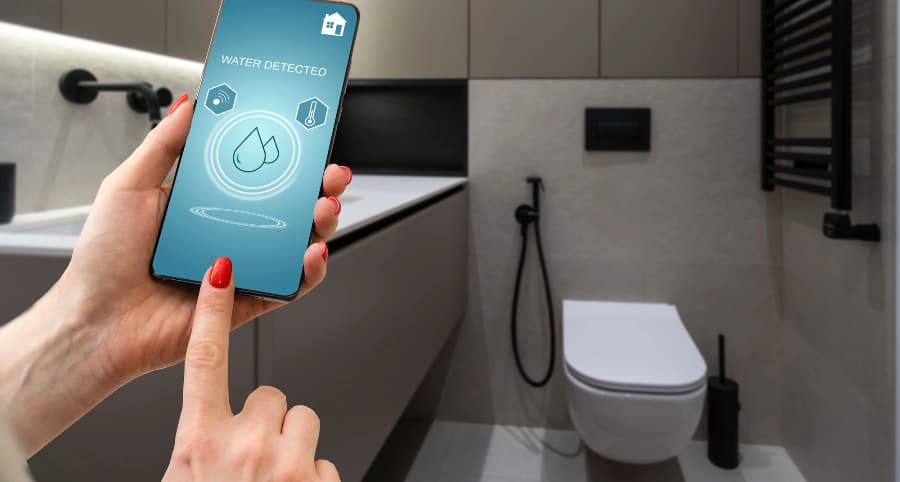How does a water sensor work and why install one with your Worcester smart home?

One minor leak at your property can cause major issues and thousands of dollars in damage. You have to protect against this danger; luckily, there’s an easy way to achieve this. A water sensor is a simple, effective, and budget-friendly solution. Explore how they work and why you should connect water sensors to your Worcester smart home.
How water sensors protect Worcester your home
Water enters homes in numerous ways, whether from a plumbing issue, storm-related event, appliance snafu, or simple human error. However it occurs, you must know right away, and this is why water sensors are important. But how exactly do they work?
Most water sensors are conductive and work with a pair of electrodes. When water reaches the electrodes, an electrical circuit is created, setting off your alarm. You’ll also discover capacitive sensors that emit an electrical field. Your alarm triggers when water contacts the conductive parts of these sensors and disrupts the field. Optical sensors utilizing infrared LED light are another choice.
Some water sensors give you more
A few innovative water sensors offer even more protection as they have incorporated temperature sensors. This is an outstanding feature in preventing pipe freezing. If there’s a drastic drop in temperature, you’ll find out at once. Taking measures before pipes rupture will save you from water damage and expensive repairs.
Why integrate water sensors into your Worcester smart home?
When water issues occur, you must be notified immediately. You can achieve this goal by integrating water sensors into your smart home. Whether you’re there to hear the alarm or somewhere else, you’ll get an instant alert on your mobile device. As an additional backup, your 24/7 monitoring team will be notified. Every second counts in a water emergency to control the destruction and disturbance to your household.
Where should you place water sensors?
Any location at risk of an influx of water is an appropriate place for water sensors. Install them in these locations:
- Bathrooms: Place in back of toilets or next to bathtubs.
- Basements: Water frequently seeps into lower levels via damaged walls or because of heavy rain or malfunctioning sump pumps.
- Near water heaters or appliances: Any water-using appliance might leak at some point.
- Below sinks: Water sensors are perfect for discovering pipe leaks in areas not easy to see.
- Attics: Detect roof leaks promptly and prevent expensive repairs.
Install water sensors with your Vivint smart home
Give your home the comprehensive protection it requires with Vivint’s advanced tools. Our water sensors in Worcester link to your Vivint smartphone app to deliver instant notifications whenever your alarm goes off. You also enjoy built-in temperature sensors to avert pipe freezing. Explore the smart home components available in Worcester by calling (508) 392-5472 today.
